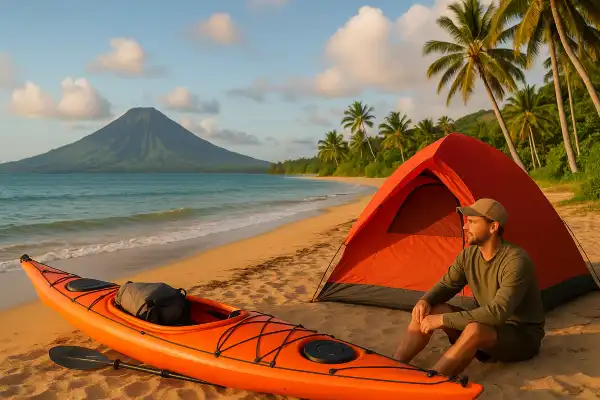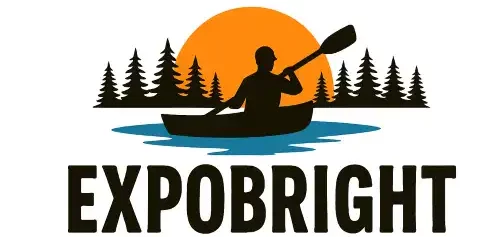Where can you kayak camp in Hawaii? This question crosses the mind of every paddler who’s ever dreamed of combining ocean exploration with sleeping under tropical stars. The Hawaiian Islands offer some of the most spectacular coastal camping experiences in the world, but navigating permits, seasonal restrictions, and remote access points requires careful planning.
During my early paddling days, I spent countless hours studying maps and permit websites, trying to piece together which beaches allowed overnight stays and how to legally access them by kayak. That research phase taught me that Hawaii’s kayak camping opportunities are as diverse as the islands themselves, each offering unique challenges and rewards.
Where can you kayak camp in Hawaii?
Hawaii offers several premier kayak camping destinations, with the Na Pali Coast of Kauai being the crown jewel, featuring two main campsites: Kalalau (accessible after a 7-mile paddle) and Miloli’i (about 11 miles down the coast). Beyond Kauai, the Big Island provides multiple coastal camping opportunities at state and county parks, while Maui and Oahu offer more limited but still rewarding options for the prepared paddler.

Na Pali Coast, Kauai: The ultimate destination
The Na Pali Coast represents the pinnacle of Hawaiian kayak camping. Kalalau campsite, located 7 miles from the launch point, allows kayak campers to stay for up to 5 nights with a standard permit. Miloli’i campsite, about 11 miles down the coast, permits a maximum of three nights and is accessible only by ocean.
Permits cost $35 per person per day for visitors ($25 for Hawaii residents) and are required for anyone proceeding past Hanakāpīʻai Valley. Camping permits are available from May 15th through September 7th and can be booked up to 90 days in advance through the DLNR State Parks website. Only 60 people are allowed on the trail at any one time, so permits often sell out quickly during peak season.
Most paddlers launch from Haena County Beach Park on the North Shore and paddle to their permitted campsite, though some opt for the gentler approach from Polihale State Park. Both campsites feature composting toilets, but all water sources require treatment, and no trash services are available.
Big Island coastal camping options
The Big Island offers numerous kayak-accessible camping locations along its diverse coastline. State parks like Kīholo State Park Reserve provide weekend-only camping along the stark, lava-covered Kona coastline. Tent camping at state parks costs $20 per night for Hawaii residents and $30 for non-residents, with a maximum stay of 5 consecutive nights.
County beach parks offering coastal camping include Isaac Hale Beach Park, Laupahoehoe Beach Park, Mahukona Beach Park, Milolii Beach Park, Punaluu Beach Park, Spencer Beach Park, and Whittington Beach Park. County campsite fees range from $6-21 per adult per night depending on residency status.
Several backcountry campsites are accessible by kayak along the island’s remote coastline. Ka’aha, Halape, Keauhou, and Apua Point campsites are located near the ocean and accessible via trail or potentially by kayak for experienced paddlers. These sites require permits through Hawaii Volcanoes National Park.
Maui’s limited but rewarding options
Maui’s primary kayak camping option is Wai’ānapanapa State Park, which offers tent camping along a volcanic coastline featuring a black sand beach, sea caves, and natural stone arches. This location is unique as it’s the only Hawaii state park that allows a small designated area for camper vans.
The park provides excellent opportunities to view seabird colonies and explore native hala forests, though ocean access can be challenging depending on conditions. Reservations follow the same 90-day advance booking system as other state parks.
Oahu coastal camping possibilities
Oahu offers camping at Ahupua’a ‘O Kahana State Park and Bellows Field Beach Park, both located on the island’s eastern shores. Malaekahana Beach Campground on Oahu’s northeastern shore spans 36,288 acres and provides direct beach access for kayaking, swimming, bodysurfing, and sailing activities.
Access by kayak requires careful planning due to Oahu’s more developed coastline and higher traffic areas. Launch points near these camping areas include various county beach parks with public access.
Essential planning considerations
Camping permits for state parks are available 90 days in advance, with reservation slots opening at 12:01 AM HST. Permits are issued on a first-come, first-served basis, and the high demand often causes websites to run slowly during peak booking times.
Stream water must always be treated, no trash services are provided at remote campsites, and all gear must be packed in and out. Ocean conditions can be challenging, with open ocean swells, breaking waves, and wind common along exposed coastlines.
Weather patterns significantly impact accessibility. Hawaii experiences a hotter, drier summer season (April-October) and a cooler, rainier winter (November-March). Summer camping permits for Na Pali Coast run from May 15 through September 7, aligning with calmer ocean conditions.
Conclusion
Three months ago, I guided a family through their first Na Pali Coast kayak camping adventure, watching their faces transform from nervous anticipation to pure wonder as we rounded each dramatic headland toward Kalalau Beach. They’d spent weeks preparing using a detailed checklist, securing permits exactly 90 days out, and practicing their paddle strokes in calmer waters. When we finally set up camp with that iconic fluted ridge backdrop, the father told me it was worth every minute of preparation. Having a comprehensive guide to Hawaii’s kayak camping options makes the difference between a stressful scramble for permits and a seamlessly executed adventure that creates memories lasting far beyond the return paddle home.
